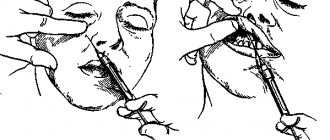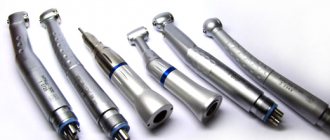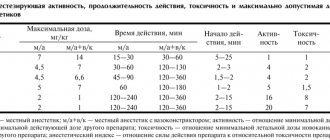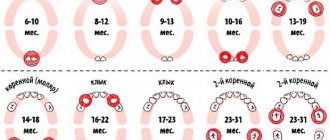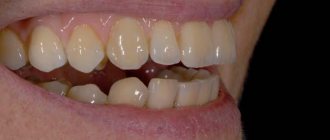A dental curing lamp is used to create a stronger bond between the molecules of the dental composite material. This device operates using light-emitting diodes (LEDs) and polymerizes light-curing dental materials. The blue light of the lamp is used for filling teeth and sealing dental canals. Today, the presence of such a lamp in a dental office is the “gold standard”, ensuring high quality of services provided.
Currently, dentists successfully treat teeth almost painlessly, prosthetize missing teeth, and restore damaged dental units. All this would have been impossible without tooth filling. The filling hardens as much as possible only under the influence of a polymerization (or dental) lamp. The lamp itself usually consists of an LED, a main device and an optical fiber.
Where can I buy a curing lamp?
In the online store of our company “STOMTRADE” you can buy a polymerization lamp for dental practice at the best prices. Each device from our range has been certified and is accompanied by warranty service. The catalog contains more than 20 models of polymerization lamps.
Here you can find dental lamps of different price categories, choose the most suitable one in terms of price/quality ratio for your dental office.
You can learn more about the technical details and characteristics of polymerization dental lamps by clicking on the item in the online catalog.
Medical Internet conferences
Selecting a Dental Curing Light for Filtek Ultimate Light Curing Composite Material
Burkova A.A., Shcherbakova S.B.
Scientific supervisors: Ph.D., ass. Savina E.A., ass. Aslanyan M.A.
Federal State Budgetary Educational Institution of Higher Education Saratov State Medical University named after. IN AND. Razumovsky Ministry of Health of the Russian Federation
Department of Propaedeutics of Dental Diseases
Filtek Ultimate (3M ESPE) is a new generation light-curing composite filling material. It is used for filling carious cavities of all groups of teeth, forming a stump for an orthopedic structure, and restoring teeth. To obtain a complete and high-quality result, each layer must be polymerized separately using a halogen or LED lamp with a light range of 400-500 nm.
Objective: To compare the efficiency, advantages and disadvantages of halogen and LED lamps based on a literature review.
Halogen curing lamps work by using electrical energy to heat a tungsten filament to a white color. For polymerization, 0.5-0.7% of the generated light is sufficient, and the rest of it is dissipated in the form of heat. The range of light passing through the filter is 400-500 nm, and efficiency = 2-4%. The leading disadvantages of these lamps are: overheating of tooth tissues, long polymerization time (20-40s); vibration and noise of the device; change the filter once a year; frequent replacement of the incandescent lamp; high power consumption. The advantages include a wide radiation spectrum and the possibility of polymerization of composite materials with a photoinitiator other than camphorquinone.
LED lamps based on LEDs generate light with a range of 60 nm using the energy of excited electrons. Blue LEDs are used to activate photopolymerization in dentistry. Unlike a halogen lamp, all the energy of the LED emitter lies in the blue light range and is maximally aimed at photopolymerization of the composite. So, the advantages of LED lamps: no filters; short polymerization time (10-20s); low power consumption; absence of noise and vibration; constancy of luminous flux; ergonomics. Disadvantages of LED lamps: used exclusively for camphorquinone-containing composites; strongly scatter the light stream.
One of the criteria for choosing a lamp is the price, which for halogen lamps is in the range of 3000-6000 rubles, and for LED lamps - 8000-70000 rubles.
Conclusion: halogen lamps are inferior to LED lamps, since they emit a lot of heat and excess spectrum, heating the tooth tissue and significantly increasing the time of overall polymerization of the material, and also have a negative effect on the doctor’s vision. And the need for a large amount of energy reduces its ergonomics. The need for constant cooling interferes with the comfortable work of the dentist. Thus, for productive work with Filtek Ultimate material, it is better to use LED polymerization lamps.
How to choose and profitably buy a polymerization lamp for dentistry?
· The optimal photon flux power for photopolymerization lamps is 450 mW and above. Make sure the device meets this specification
· The wavelength of good light curing lamps is in the range from 450 to 460 nm
· Some devices can operate both from the network and autonomously. There are also additional functionality such as a timer and overheating protection. This versatility is an advantage
· Recommended temperature range from +5 to +40 degrees Celsius
· High-quality light curing lamps have a power dissipation density of 100 mW/cm2
How to choose a polymerization lamp based on price-quality ratio?
Modern dentistry works real miracles. New equipment, technologies, drugs, types of operations appear, and doctors have learned to treat teeth without pain, to restore even the most “hopelessly sick”. For example, today it is impossible to imagine dentistry without light-curing composites, thanks to which dental restoration can be carried out in one visit.
But in order to be firmly and reliably fixed in the tooth cavity, the composite needs a special device called a photopolymerization lamp. Thanks to it, the composite is fixed in a matter of seconds under the influence of light, and remains in the cavity for many years. Now it is difficult to find a clinic that does not use this device, but it is even more difficult to understand the abundance of models on the market and choose a reliable and functional device that will work properly for many years. What is clear is that you need to choose an LED lamp, not a halogen one. It has a high efficiency, less heat is generated during operation, and “useless” losses are minimal, and in general, they are the future. But how, in this case, choose an LED lamp with which you can work for a long time and with high quality?
In this case, some rely on a well-known brand, others follow the advice of friends. But the majority are still guided by the “price/quality” ratio. Dental Magazine studied the dental market in search of the ideal lamp that is affordable, works flawlessly, and will suit most doctors. The choice fell on the LEDEX™ WL-070 light curing lamp.
LEDEX™ WL-070 was developed by Taiwanese company Dentmate Technology Co. Although some dentists are still biased towards Chinese equipment, this company stood on par with well-known manufacturers of dental equipment back in 2007, and since then has simply conquered the market with its unique and innovative solutions. And for those who cannot get rid of the stereotype, let us remind you that Taiwan is not exactly China, and their technologies are admittedly more progressive.
The lamp has been on our market for more than 10 years, and has rightfully established itself as an ideal option for your money. Thousands of Russian dentists use this model, giving it a positive assessment. To perceive LEDEX™ as a disposable lamp that you don’t mind breaking is completely wrong. This is a convenient device that does not act up, polymerizes and produces a very good and predictable result. However, you won’t want to change it if it meets your requirements.
When studying a lamp, the first thing you pay attention to is the LED. There is nothing to complain about here: a diode of increased power and brightness, which, among other things, minimizes the loss of emitted light, and provides the highest possible luminous flux density at the very tip of the light guide and light intensity indicator. The wavelength is 440-480 nm, and the luminous flux power is 1100-1200 mW/cm². With such characteristics, almost any composite material can be polymerized. This makes LEDEX™ WL-070 a universal device. The lamp operates in two full power modes (10 and 40 seconds) and in two modes using “soft start” technology (20 and 30 seconds). When the five-second polymerization intervals pass, the device beeps. All detailed information about processes and settings can be seen on a large and convenient electronic display.
The LED cooling system is very attractive. Thanks to the thermal circuit sensor, it will not overheat and fail at the most inopportune moment. Therefore, the local LED has a long service life, and you don’t have to think about replacing it for a very, very long time.
The lamp can be used either directly from the outlet or wirelessly. The lithium-ion battery is fully charged in just 3 hours, but you can also use the lamp in charging mode so as not to waste time. Need I say how much this simplifies the work? However, you won’t have to connect the lamp to the outlet too often, since it has an automatic shut-off function, which significantly saves battery. By the way, the lamp has a USB output, so, if necessary, you can charge it from a computer.
But all technical characteristics fade into the background if the device is inconvenient to operate. In the case of LEDEX™, everything is thought out to the smallest detail. It has a thin, long light guide that is comfortable for working on distant teeth. And using the programmable menu, you can set the desired current parameters for a specific type of material. The lamp automatically remembers the mode of the last applied program, which simplifies the situation if you are working with one material.
The creators paid great attention to ergonomics: it is lightweight, comfortable and surprisingly easy to use. It won't take much time to learn how to handle it. The lamp is well equipped, there is everything here, starting with a protective UV filter screen and silicone caps for the light guide, and including disposable covers.
And finally, the lamp is available in seven bright, attractive colors, which will allow you to match it to the color of the upholstery of the chair, furniture or the general style of the dental office.
As a result, we have an excellent “workhorse” that is convenient and pleasant to work with, both in terms of functionality and aesthetics. In terms of price-quality ratio, this is one of the best options, but the choice, as always, is yours.
Specifications:
- Light source: blue dental LED.
- LED power: 5 W.
- LED service life: at least 100,000 hours.
- Wavelength: 440-480 nm, peak 460 nm.
- Luminous flux density: 1100-1200 mW/cm2.
- Light guide: acrylic-free optical glass, black, ø 8 mm.
- Sterilization of the light guide: in an autoclave at a temperature not exceeding 135°C. No more than 20 minutes.
- Weight: 120 grams (with battery and light guide).
- Lamp size: ø26 mm, length 156 mm.
- Battery: Li-ion, 3.7V/800 mAh.
- Battery full charging time: 3 hours.
- Number of polymerization cycles when the battery is fully charged: 200 x 10 seconds.
- Charger: miniUSB connector, 100-240 V, 50/60 Hz, 5V/1A.
You can purchase LEDEX™ WL-070 by following this link - www.aldent.pro
Curing dental lamp
The polymerization dental lamp is a bright discovery in dentistry at the turn of the 70s and 80s. They are also called activating, they emit high-intensity blue light in the range of 400-500 nm. There are wired and wireless. Also divided into 6 types:
- Halogen
- With a soft start
- For remote polymerization
- Plasma
- Argon laser
- LED based
Prices
The price of polymerization dental lamps varies significantly depending on the technology. The cheapest are halogen, costing from 3000-4000 rubles, with a soft start in the range of 5000-6000. LED ones cost from 6500-8000 up to 60000-70000.
Halogen
Using electrical energy, they are heated to white. However, a lot of heat is wasted (as is the case with a standard light bulb). The light passes through a filter that filters out unnecessary waves, leaving a range of 400-500 nm. The efficiency of the halogen polymerization dental lamp is 0.7%.
Pros: inexpensive; suitable for the maximum number of filling materials (since they appeared on the market 25 years ago); easy to maintain
Disadvantages: excessive heat generation, danger of overheating the tooth (you have to reduce the polymerization time). For this reason, a cooling fan and heat dissipation mechanism are included in the design. Requires brightness check once a week. The lamp should be changed not when it burns out, but when there is a decrease in glow parameters below the norm of 300mV/cm²
With a soft start
The technology is called soft start. A distinctive feature is that in the first 10 seconds, low-intensity light is emitted, polymerization begins, but gently, due to this, polymerization shrinkage is reduced. After 10 seconds, the intensity increases and the filling material passes the gel point (the state when the material changes from a fluid consistency to a solid one). How is polymerization shrinkage reduced? It is compensated by the fluidity of the filling until the gel point is reached. During the second half of illumination, the material becomes hard and durable.
To achieve the effect specified by the manufacturer, follow the manufacturer's instructions. If a polymerization time of 30 seconds is specified, then 10 are allocated to a soft start + 30 to high-intensity light.
For remote polymerization
The operation is identical to soft start lamps; the time to reach the “gel point” is delayed. Light source - halogen bulbs. The technique is used when filling the surface layer. With the standard technique, polymerization shrinkage is most pronounced at the filling/enamel interface.
- For the first 3 seconds, a beam of one third of the power is applied. There is enough light energy for polymerization to begin, but the hardening phase does not occur.
- The “dark” period lasts 3-5 minutes. While the doctor grinds and polishes the filling, the stress due to shrinkage is compensated
- Final polymerization with a high-power beam at full strength
Plasma
The arc between two electrodes in the plasma emits bright light. The beam diameter is reduced to 5mm. Curing occurs faster: in 5-10 seconds instead of 30-40. When sealing fissures, it takes up to 4-5 seconds.
Pros: high speed
Cons: new technology, and some filling materials will not interact with it; bulky size; high cost; short polymerization time will reduce strength and increase shrinkage; Efficiency 0.2% is lower than halogen 0.2%
Argon laser
Electrons in the gas (argon) move from an unstable state to a stable state, and at this moment light is generated. Unfortunately, there are no working models on the dental market. Working prototypes are researched and developed.
Pros: it is possible to use light of a given wavelength
Cons: large sizes; require cooling (generate excess heat); the lowest efficiency of all groups at 0.02%
LED based
They are called LED lamps. Electric current activates the generation of light in small crystals due to the transformation of electron energy. No heat is generated during the process. The color changes depending on the chemical composition of the crystals. As a result, light of the required length is emitted, and “useless” losses are minimal. Compared to a halogen lamp, it requires half as much. The losses there, even when using a modern light filter, amount to more than half. As a result, the lamp glares less, but it’s still too early to give up orange glasses. The intensity of the light beam is measured not by third-party testers like with halogen lamps, but by built-in ones.
The efficiency is the highest among all types - 7%. For polymerization, a power of 5 W is enough without generating heat. The design of polymerizers has changed with the advent of LED lamps: no power cords, less weight, and the cooling fan has been removed. Theoretically, the service life is unlimited. They do not age, the intensity does not decrease. You just need to change the battery every 2 years. The future belongs to LED technologies, which will gradually replace halogen analogues.
